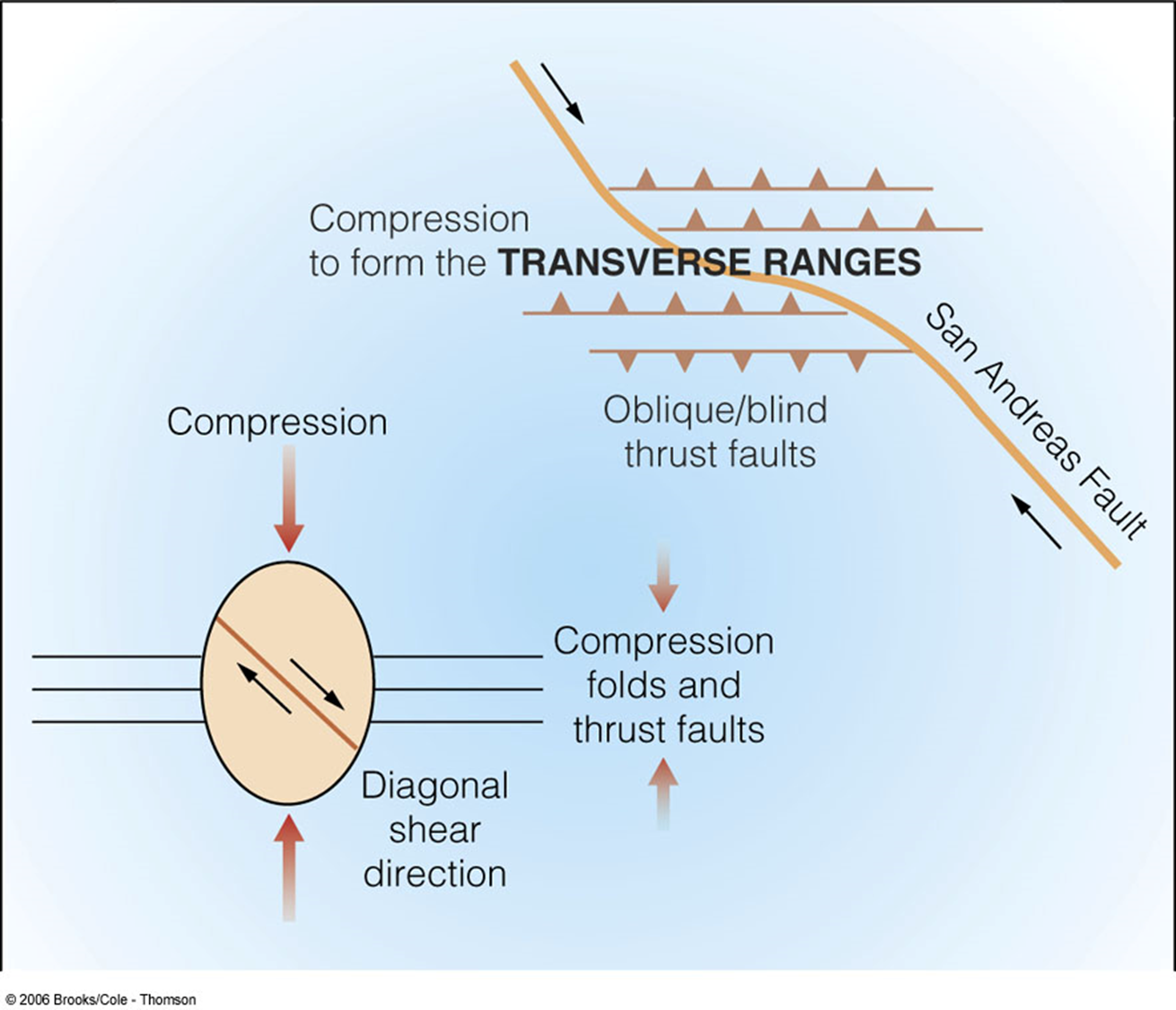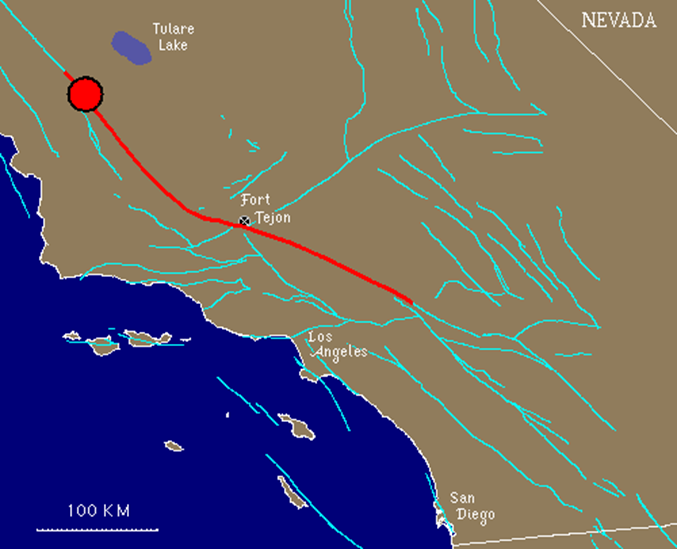Strike-Slip Faults: SAFZ - Southern California
San Andreas – San Jacinto faults
The San Andreas Fault Zone has produced numerous right lateral strike slip faults in Southern California. In all they are 600 miles in length and have created 300+ miles of displacement. San Andreas Fault makes a major bend through the transverse ranges. This makes it a right-lateral left-stepping fault, which puts the area in the step zone under compression. Thus, the tectonics in Southern California are much more complex than those in the north, with normal, reverse and thrust faults criss-crossing the region in addition to the strike slip faults. It is also the reason for the Transverse Ranges (Santa Monica, San Gabriel, and San Bernardino Mountains). "Transverse" means "made at right angles to the long axis of the body". Nearly all of the mountains on the west coasts of North, Central and South America run north-south; the Santa Monica, San Gabriel, and San Bernardino Mountains in Southern California run east-west, or are transverse from the rest of the mountains. Why? Geologists aren't really sure, but it may be related to extensional tectonics to the east in the Basin and Range region.

San Andreas – San Jacinto faults
Studies by Caltech indicate 9 major earthquakes since the 6th century: 575, 665, 860, 965, 1190, 1245, 1470, 1745, 1857. The average repeat interval of 160 years
Theoretically, the next one should be . . . ?
The Great 1857 Fort Tejon EQ
|
Time: January 9, 1857 about 8:20am PST Location: 45 miles NE of San Luis Obispo Magnitude: Mw 8.0 (est.) Type Of Faulting: right-lateral strike-slip Fault: San Andreas Fault Length of surface rupture: about 225 miles (360 km) Maximum surface offset: about 30 ft (9 meters) |
 |
|
Damages |
|
|
Buildings
|
Human Death and Injury
|
The 1857 Fort Tejon EQ is one of the largest to ever strike the state, but there were only a handful of fatalities. Why? The reason is the population of the state - or lack of population. The 1852 census recorded a population of 264,435 for the entire state, with most of the population in the north. Less people in the area means less deaths.
